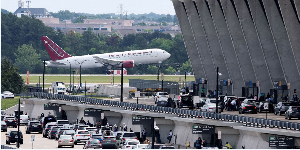Business News of Wednesday, 1 June 2016
Source: B&FT
Komenda factory requires 225,000mt of sugar cane
The newly-inaugurated US$36million Komenda Sugar Factory requires 225,000 metric tonnes of sugarcane every other six months to operate at optimal capacity, according to Nitin Wagh, President of SEFTECH - the project contractor.
“For a plant with a capacity to crush 1,250 tonnes per day for 180 days (six months), it requires 225,000 metric tonnes of sugarcane. The main crushing season is from November-April. May-October is the maintenance period when there is no sugarcane for processing.
If you crush 1,250 tonnes of sugarcane, there is 10 percent recovery. This also depends on what quality of sugarcane you have. With the best quality, recovery can go as high as 15 or 16 percent of sugar. So if you crush 100 tonnes, you get about 15 or16 tonnes of white sugar,” said Mr. Wagh.
The factory was constructed with a loan facility of US$35million from the government of India-sponsored Exim Bank of India; Line of Credit with an interest of 1.75 percent; and a counterpart funding of US$1.26million from the government of Ghana (GoG).
The agreement was signed with SEFTECH as the contractor in September 2013. The Letter of Credit (LC) was established in October 2014 with delivery of the project expected in two years; that is, in October 2016. The Loan has an interest of 1.75 percent, with a five-year moratorium. Repayment starts in the sixth year.
Raw materials for the installed processing plant’s trial this week is based on out-growers sugarcane. There isn’t enough raw material now. More work, according to Mr. Wagh, needs to be done to ensure that good quality sugarcane is available for processing.
“The sugarcane farmers within the Komenda enclave don’t have the modern techniques, no irrigation, and no fertiliser programme. What they are doing is that whatever crop comes at the end of the year they harvest it. You cannot do that for many years.
“In India, when you plant the sugarcane, which takes one year to mature, it is harvested for two years and fresh seedlings planted. But here in Ghana, the root is there for 38 or 40 years. That means farmers don’t know about it. So today, the sugarcane in the Komenda area will give you just 4 or 5 percent of sugar. So if you crush 1,250 tonnes, you will get about 50 tonnes,” Mr. Wagh noted.
The Ghana sugar industry was started in the First Republic, and consisted of two factories at Asutsuare and Komenda which began operations in 1967.
The two factories had their own plantations and also bought cane from farmers. Development of the plantations and factories -- which were supplied, erected and financed by Poland (Asutsuare) and Czechoslovakia (Komenda) -- was badly-planned, executed and managed.
Water for the factory and housing at Komenda was provided by a 24-mile canal from the River Pra; the canal was intended to provide sugar estates with irrigation through a sprinkler system.
The Komenda Sugar Factory later went under private care, but this wasn’t enough to sustain it.












